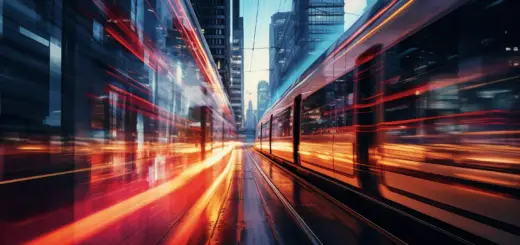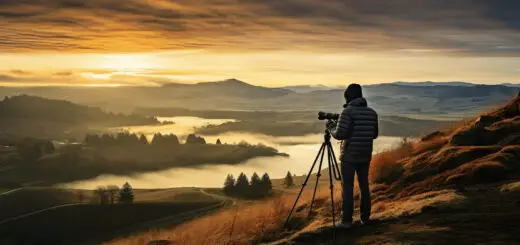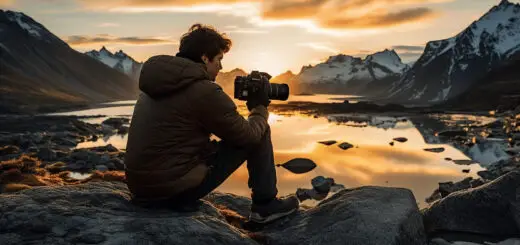Mastering the Art of Street Photography: A Comprehensive Guide
Street photography is an incredibly popular genre of photography that captures the essence of everyday life in public spaces. It’s an art form that combines spontaneity, intuition, and quick reflexes to create stunning images of quintessential moments. This comprehensive guide will walk you through the ins and outs of street photography, covering everything from equipment choices and camera settings to composition techniques and post-processing. So, let’s dive into the world of street photography and start mastering this captivating art form.
Table of Contents
- Getting the Right Equipment
- Understanding Camera Settings
- Mastering Composition Techniques
- Capturing the Mood and Atmosphere
- Practicing and Improving Your Skills
- Post-processing Your Images
- Ethics of Street Photography
- Additional Resources and Inspiration
Getting the Right Equipment
One of the first steps in mastering street photography is acquiring the necessary gear. While the choice of equipment may vary depending on personal preferences and budget, here are some general guidelines:
Camera Options
- DSLR/Mirrorless cameras: These versatile cameras offer a wide range of capabilities, interchangeable lenses, and excellent image quality.
- Compact cameras: Also known as point-and-shoot cameras, their small size and weight make them perfect for discreet street photography.
- Smartphone cameras: Modern smartphones come with powerful cameras that can produce amazing results, making them a convenient option for street photography.
Lenses
Selecting the right lens is crucial for capturing impactful street photos. Two popular options for street photographers are:
- Prime lenses: These fixed focal length lenses offer superb image quality and are great for teaching the fundamentals of composition.
- Zoom lenses: These versatile lenses allow you to change focal lengths without needing to switch lenses, offering convenience and flexibility.
Accessories
Some useful accessories to enhance your street photography experience include:
- Camera strap: A comfortable strap is essential for carrying your camera around with ease.
- Extra batteries and memory cards: Always be prepared for a long day of shooting by carrying spare batteries and memory cards.
- Cleaning supplies: Keep your lens and camera sensor clean to avoid spots and smudges on your photos.
Understanding Camera Settings
To produce the best possible images, understanding your camera’s settings is essential. Some of the key settings to consider include:
Aperture
In street photography, aperture controls the depth of field – how much of the photo is in focus. A wide aperture (low f-number) creates a shallow depth of field, blurring the background and isolating your subject.
Shutter Speed
Shutter speed determines how long the camera’s sensor is exposed to light, affecting motion blur. Faster shutter speeds (1/250th sec or faster) can freeze motion, while slower speeds can create a sense of movement or blur.
ISO
ISO refers to the camera sensor’s sensitivity to light. Use a higher ISO setting in low-light conditions, but beware of increased noise (graininess) in your images.
Autofocus and Manual Focus
Both autofocus (AF) and manual focus (MF) have their merits in street photography. AF is faster and more accurate, while MF offers more precise control over your focal point.
Mastering Composition Techniques
Good composition is fundamental to creating visually appealing images. Here are some classic composition techniques that you can apply to your street photography:
The Rule of Thirds
Divide your frame into a 3×3 grid and place your subjects or points of interest along the lines or at their intersections to create a balanced and engaging composition.
Leading Lines
Use lines such as roads, walls or fences to guide the viewer’s eye towards your subject or create a sense of depth in your image.
Framing
Look for natural frames, such as doorways or windows, to enclose your subject and make it stand out in your image.
Negative Space
Leave empty space around your subject to draw attention to it and create a sense of simplicity and balance.
Capturing the Mood and Atmosphere
In addition to composition, capturing the mood and atmosphere of a scene is essential to create compelling street photos. Here are some tips to help you convey emotion in your images:
Lighting
Utilize different types of light, such as golden hour, blue hour or harsh midday sun, to create different moods in your images.
Colors
Pay attention to color combinations and contrasts in a scene, as they can help to convey emotions and highlight your subject.
Emotion and Expression
Capture people’s expressions, gestures, and body language to tell a story and evoke emotions in your viewers.
Practicing and Improving Your Skills
To truly master the art of street photography, practice is key. Here are some tips for honing your skills and improving your craft:
Shoot Daily
Shoot as often as possible – the more you practice, the faster you’ll improve your skills and develop your unique style.
Explore Different Locations
Tackle various environments, from busy city streets to quiet villages, to challenge yourself and broaden your perspective.
Analyze Your Work
Review your images critically, identify your strengths and weaknesses, and learn from your successes and failures.
Network with Other Photographers
Join local photography clubs or online forums to exchange feedback, learn from others, and stay inspired.
Post-processing Your Images
Enhancing your images in post-processing can elevate your street photography to new heights. Essential tools and techniques to consider include:
Cropping and Straightening
Adjust your image’s composition and alignment to create a stronger visual impact.
Exposure and Contrast
Optimize your image’s exposure and contrasts to showcase your subject and scene effectively.
Color Adjustments
Adjust the hue, saturation, and vibrancy of your images to create the desired mood and atmosphere.
Sharpening and Noise Reduction
Enhance the details and clarity of your images without introducing excessive noise or artifacts.
Ethics of Street Photography
Street photography raises some ethical concerns about privacy and consent. Consider the following principles to navigate these issues responsibly:
- Always respect your subjects and their right to privacy.
- Avoid photographing vulnerable individuals or compromising situations.
- Know local laws and regulations regarding photography in public spaces.
- If confronted or asked to delete a photo, comply politely and calmly.
Additional Resources and Inspiration
Finally, we encourage you to explore additional resources and learn from the work of influential street photographers to stay inspired and develop your skills further:
- Photography books and magazines
- Online tutorials and workshops
- Photo-sharing platforms and social media
- Photography exhibitions and galleries
With determination, practice, and a keen eye for captivating moments, you’ll be on your way to mastering the art of street photography in no time.


